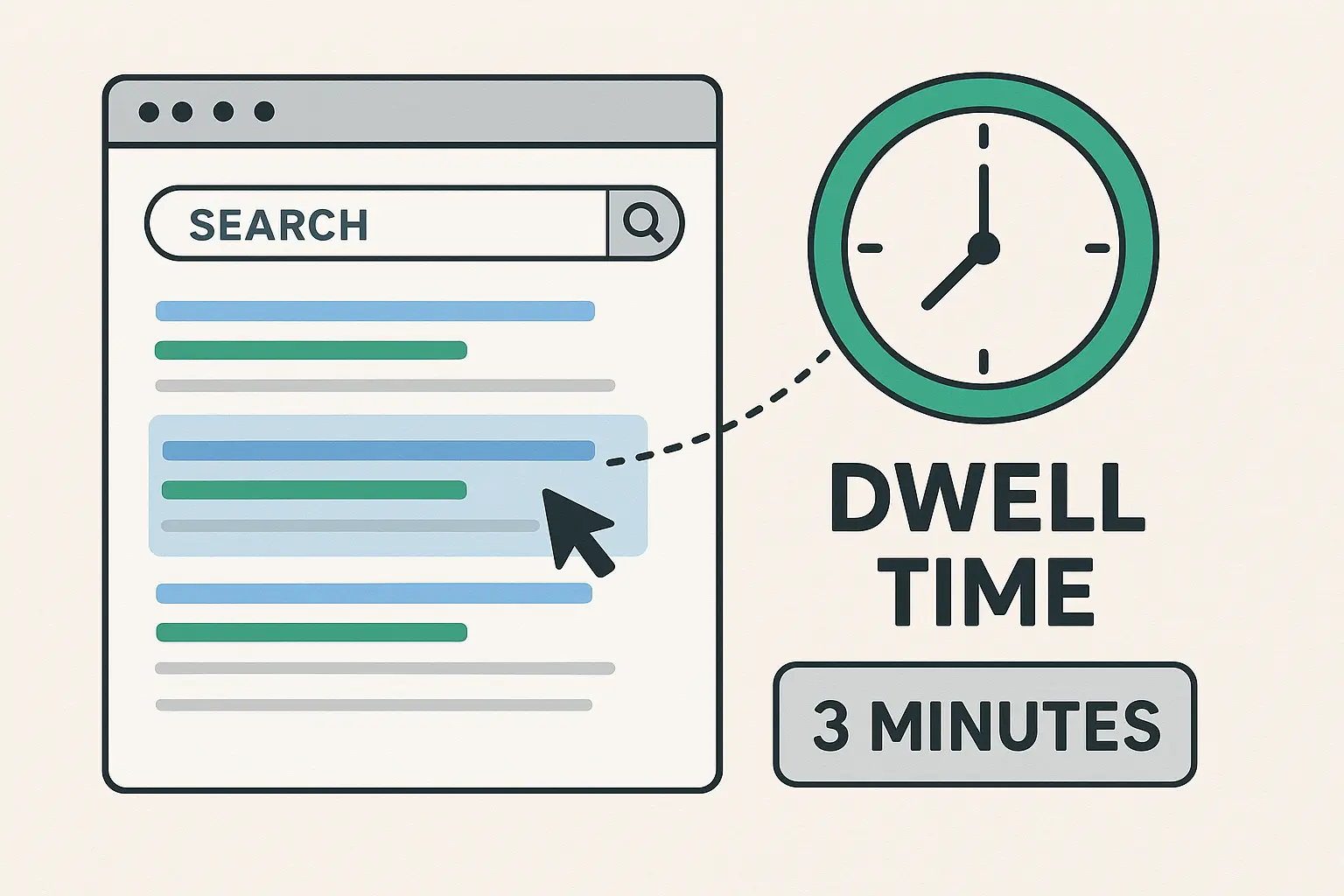What is Dwell Time?
23/10/2025

Dwell time is a digital marketing and SEO metric that measures how long a user stays on a webpage after clicking a search engine result, before returning to the search engine results page (SERP).
How to Measure Dwell Time?
- A user searches for “best running shoes”.
- They click your webpage from the search results.
- They stay on your site for 3 minutes, reading your article.
- Then they go back to Google to check another result.
→ Dwell time = 3 minutes
Difference Between Bounce Rate and Dwell Time
| Aspect | Bounce Rate | Dwell Time |
|---|---|---|
| Definition | The percentage of visitors who leave your site after viewing only one page, without taking any further action. | The amount of time a visitor spends on a page after clicking it from a search result before returning to the SERP. |
| Measures | Single-page sessions (interaction or no interaction). | Time spent between clicking a search result and going back to Google. |
| Source of data | Google Analytics (direct site metric). | Search engine metric (not visible in Google Analytics). |
| Indicates | Engagement level with the entire site. | Relevance and satisfaction with the specific page content. |
| Example | A user visits your homepage, doesn’t click anything, and leaves → counted as a bounce. | A user clicks your article from Google, reads for 2 minutes, then returns to search → dwell time = 2 minutes. |
| Ideal scenario | Lower bounce rate (visitors explore multiple pages). | Longer dwell time (visitors stay longer before returning to search). |
Relation Between Pogo-Sticking and Dwell Time
Pogo-sticking: Pogo-sticking happens when a user clicks a search result, quickly goes back to the SERP, and then clicks another result, often repeating this pattern several times.
| Concept | Meaning | Implication |
|---|---|---|
| Pogo-sticking | A behavior pattern (click → back → click another result). | Suggests poor user satisfaction. |
| Dwell Time | The duration spent on a page before returning. | A metric indicating how useful or engaging a page was. |
Why Dwell Time Matters?
Dwell time is considered an indicator of content quality and user satisfaction.
- Longer dwell time → suggests the user found your content useful or engaging.
- Short dwell time → may suggest the page didn’t meet their expectations (e.g., irrelevant info, poor design, or slow loading).
How to Improve Dwell Time?
- Create engaging, in-depth content that answers user intent.
- Use clear structure headings, bullet points, and visuals.
- Improve page speed and mobile usability.
- Add internal links to keep users exploring your site.
- Use videos, infographics, and interactive elements to increase engagement.